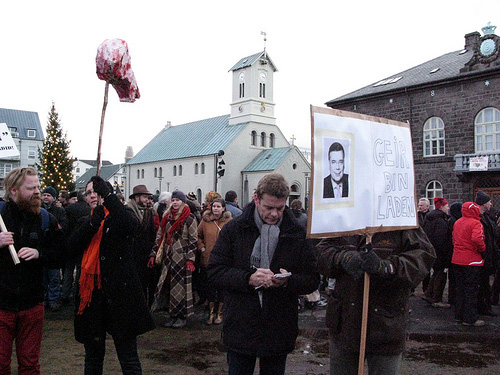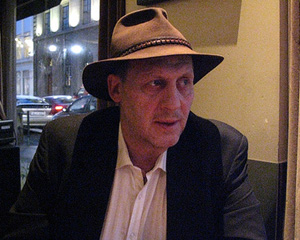This is an edited version of a post that first appeared on Kristine Lowe’s blog, Notes on the Changing Media Landscape.
Since its launch earlier this year, the media industry has been abuzz with talk of how the iPad will change the industry. As a media journalist I’ve already attended quite a few talks and read an extraordinary number of articles on the subject, but INMAs Tablet summit in Oxford this week gave me new insights into what kind of role the iPad might come to play in the media ecosystem.
Convenience or uniqueness?
That is not to say that there is a consensus about this role. For instance the Guardian’s Jonathan Moore said his newspaper saw the iPad more as convenience device, it’s iPad app offering pretty much the same content as you find on the Guardian’s news site, while the majority of the presenters saw it as the perfect device for offering unique content people were willing to pay for.
“This has to be a premium content. If you approach it as something free: let’s just turn off the light and go home. It has to be premium, paid for, from day one,” said Juan Senõr, Innovation in Newspapers UK director. He asserted that we can’t talk about tablets without talking about the rest of our platforms, pointing out that you have to have different content for different platforms.
“Tablet and paper will be premium, provide background etc, while we have to see online and mobile as mass media. You will have to charge perhaps five times more for print paper and for tablets,” he said, citing some of the products Innovation in Newspapers has remade, especially the successful Portuguese daily news magazine I, as perfect journalism to be transformed to the iPad.
Long form journalism and the ‘lean-back device’
Media consultant and commentator Frédéric Filloux said the iPad offers long-form journalism a new chance. In his view, it provides three major rehabilitations: 1) Re-bundling the news. Tablets and mobile can re-bundle content, 2) Visual 3) Length.
He also sees the device as being primarily about media consumption rather than production: “The iPad is the lean-back device: it’s a consumption device rather than a production device – it has nothing in common with a lean-forward device such as the PC.” Read more of his thoughts on this here.
Jon Einar Sandvand, digital strategist at Aftenposten, Norway’s newspaper of record, said iPad readership figures suggested it was most used in the evening, between six and eight.
Juan Antonio Giner, president and founder of Innovation in Newspapers, reiterates similar ideas to Filloux on media consumption: “Research suggests iPad will become the leading platform in terms of how much people spend consuming media on it. It is a media consumption device. If you are a mono-media operation producing second-hand stories you won’t win from iPad: garbage in, garbage out.”
Now, let me confess, I often find that big media conferences tend to focus too much on ideology and too little on how people are actually approaching a certain issue or innovation, but the Tablet Summit offered some excellent insight into how different news organisations are approaching the iPad.
Among those, the most useful was the very hands-on presentation by Saulo Ribas, creative director at Brazilian Editora Globo’s Epoca Magazine.
Useful iPad tips for publishers
His newspaper wanted to be first in the country with an iPad app, so they built a light version first, and will launch the full version in July. He offered five useful tips for newspapers wanting to develop iPad apps:
- 1. It’s an app, not a magazine or newspaper. We have to make the best use of the interface Apple has provided.
- – Good apps are non-linear. You can access content from everywhere in the app.
- – Good apps don’t require users to learn how to use it, or at least not so much. If you need instructions on how to use the app it usually means it’s poorly designed.
- – Good apps have very simple information architecture. Simplify and eliminate the unnecessary
- – Good apps allow the users to leave and then come back to where he left. Try to produce the best reading experience possible
- 2. Think about templates not pages. What is the role reserved for the editorial designer in the age of the tablets? If it looks awesome on the iPad it will look awesome on any other tablet.
- 3. Personalise: the reader is really in control. Allow the reader to define the settings of the app, the more the better. It’s a big change for us because we’re very attached to our typography in our mags and papers. We have a search view. Can’t be static, people are used to search. We’ve tried to put the basic controls at the bottom of the page.
- 4. Technology is content. Have programmers part of the newsroom
- 5. Choose the right flow of information inside the iPad app
Who controls the data?
“I do believe Apple wants to become the world’s kiosk. We could end up like the music industry; we do need to be aware of what’s happening. They control pricing and they control customer data – and if you loose those, you loose out,” said Senõr. That Apple also controls the customer data was new to me, but it was also mentioned by one of the other presenters. If that is the case, it sounds very worrying indeed.
Repurposing vs. reinvention
Many industry experts have looked to the iPad as a potential saviour for the media industry. In essence, the sound bite I took away from the Tablet Summit which best answers this proposition was that yes, there is a future life for the news industry if we reinvent, not if we just repurpose.
While I made extensive notes during the summit, Marek Miller was doing such an excellent job of live blogging it that I thought I’d afford myself the luxury of taking some time to reflect a bit on the event before I started writing about it. I will return to a few other thoughts I took away from the event a bit later, but, if you want to read more about the individual presentations, do check Mareks excellent live blog from the event here.

